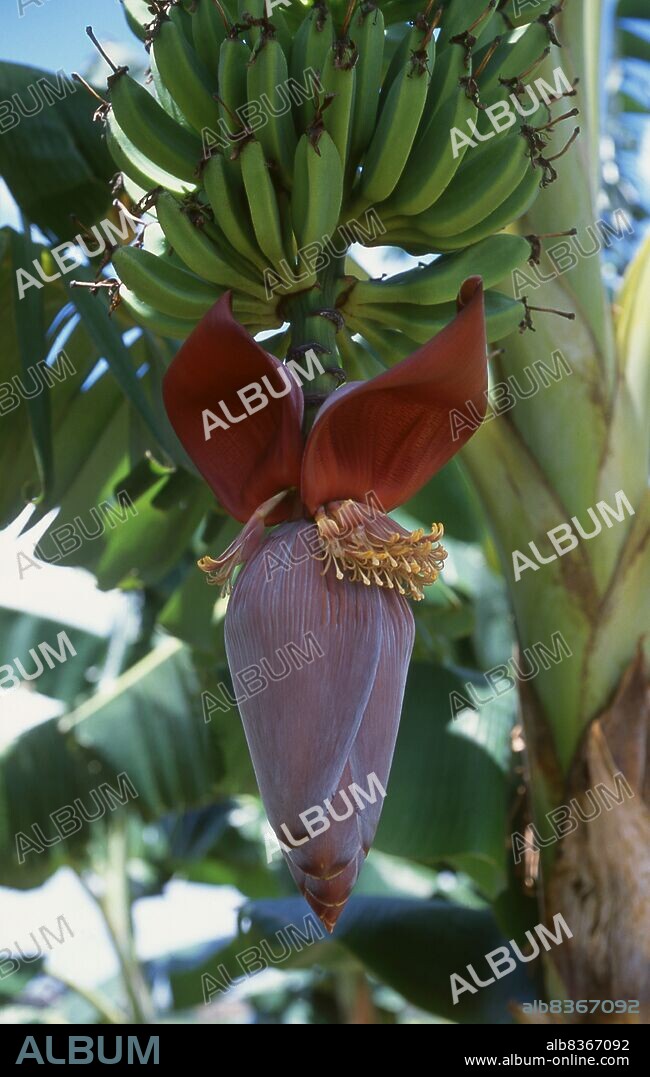alb8367092
Cuba: A bunch of bananas with the edible banana flower growing off the end, banana plantation, Matanzas Province

|
Ajouter à une autre Lightbox |
|
Ajouter à une autre Lightbox |



Avez-vous déjà un compte? S'identifier
Vous n'avez pas de compte ? S'inscrire
Acheter cette image.
Sélectionnez l'usage:

Titre:
Cuba: A bunch of bananas with the edible banana flower growing off the end, banana plantation, Matanzas Province
Légende:
Voir la traduction automatique
Bananas have been around a long time, at least in the Old World of Asia, Africa and Europe. Quite where they originated remains uncertain. Some authorities favour West Africa, since the name 'banana' is believed to have come from Guinea, via Spanish and Portuguese. In all probability, though, bananas - and their equally useful green cousins, plantains - originated in Asia, possibly in the Middle East.
. Certainly bananas are noted with approval in early Greek, Latin and Arab literature, and the name plantain is believed to derive from the Latin planta, 'a spreading sucker or shoot'. Alexander the Great saw - and no doubt tasted - bananas on his expedition to India in the third century BCE, and they are mentioned in Chinese lists of Tang Dynasty exotica as pleasant fruits of nan-yang, or Southeast Asia, more than thirteen hundred years ago.
. Certainly bananas are noted with approval in early Greek, Latin and Arab literature, and the name plantain is believed to derive from the Latin planta, 'a spreading sucker or shoot'. Alexander the Great saw - and no doubt tasted - bananas on his expedition to India in the third century BCE, and they are mentioned in Chinese lists of Tang Dynasty exotica as pleasant fruits of nan-yang, or Southeast Asia, more than thirteen hundred years ago.
Crédit:
Album / Universal Images Group / David Henley / Pictures From History
Autorisations:
Taille de l'image:
3146 x 4959 px | 44.6 MB
Taille d'impression:
26.6 x 42.0 cm | 10.5 x 16.5 in (300 dpi)
 Pinterest
Pinterest Twitter
Twitter Facebook
Facebook Copier le lien
Copier le lien Email
Email
